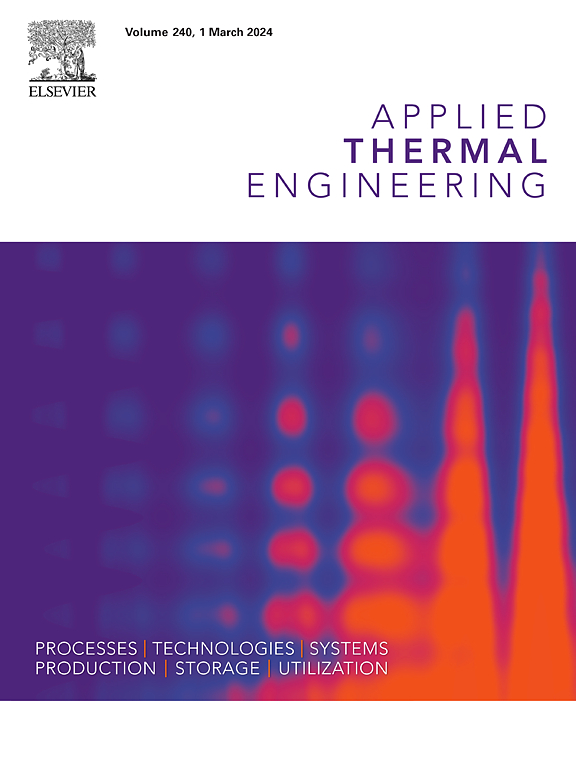Effect of novel methoxyl functionalized polysiloxanes on thermal conductivity and fluidity of alumina-filled silicone pastes
IF 6.1
2区 工程技术
Q2 ENERGY & FUELS
引用次数: 0
Abstract
Three kinds of trimethoxysilyl-functionalized siloxane oligomers with different structures were prepared through condensation and hydrosilylation reactions to increase the volume fraction of Al2O3 fillers in the polysiloxane matrix and improve their dispersibility. The surface modification effect of the oligomers with different structures on the Al2O3 particles and their influence on the thermal conductivity, thermal resistance, and cone penetration of the thermal interface materials filled with the modified Al2O3 particles were studied in detail. The thermal conductivity and cone penetration of the composite material prepared from the Al2O3 particles treated with the α-trimethylsilyloxyl-ω-trimethoxysilylethyl-terminated PDMS oligomers showed a decreasing trend with the increase of the degree of polymerization of the siloxane segment. The thermal conductivity and cone penetration of the thermal interface material filled with Al2O3 particles treated with the α, ω-bistrimethylsilyloxyl-terminated PDMS oligomers bridged by (MeO)3Si(CH2)2MeSiO segment and the methoxyl-functionalized tris(trimethylsilyloxyl-terminated polydimethylsiloxyl)silane oligomers showed a trend of first increasing and then decreasing with the increase of the length of the siloxane chain segment. The α, ω-bistrimethylsilyloxyl-terminated PDMS oligomers bridged by (MeO)3Si(CH2)2MeSiO segment showed the best modification effect on Al2O3 fillers when the degree of polymerization n = 9. It could be used to prepare a thermally conductive silicone paste with an Al2O3 particle filling volume fraction of 88.0 vol%, a thermal conductivity reached up to 9.119 W / (m· K), and a 1/4 cone penetration of about 55.0.

求助全文
约1分钟内获得全文
求助全文
来源期刊

Applied Thermal Engineering
工程技术-工程:机械
CiteScore
11.30
自引率
15.60%
发文量
1474
审稿时长
57 days
期刊介绍:
Applied Thermal Engineering disseminates novel research related to the design, development and demonstration of components, devices, equipment, technologies and systems involving thermal processes for the production, storage, utilization and conservation of energy, with a focus on engineering application.
The journal publishes high-quality and high-impact Original Research Articles, Review Articles, Short Communications and Letters to the Editor on cutting-edge innovations in research, and recent advances or issues of interest to the thermal engineering community.
 求助内容:
求助内容: 应助结果提醒方式:
应助结果提醒方式:


